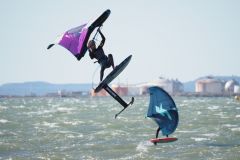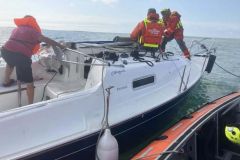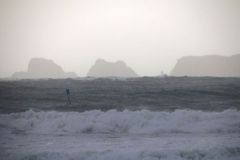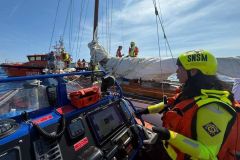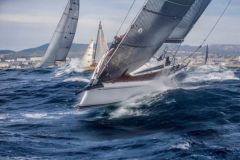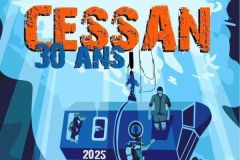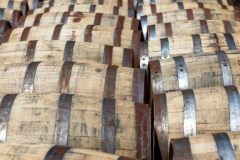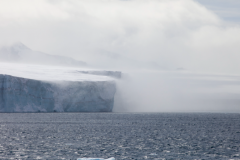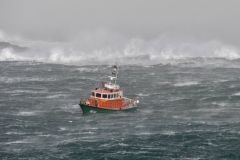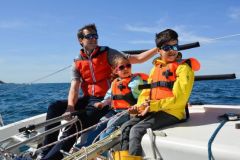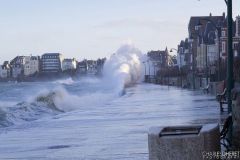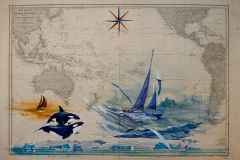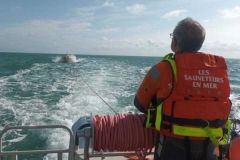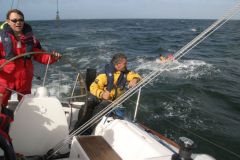An exercise organized between the SNSM and the French Navy
Appointment is taken in front of the station of Carro, in the Bouches-du-Rhône. It is one of the oldest rescue stations in the Mediterranean . Today's exercise is organized in collaboration with the 35F fleet, based in Hyères.
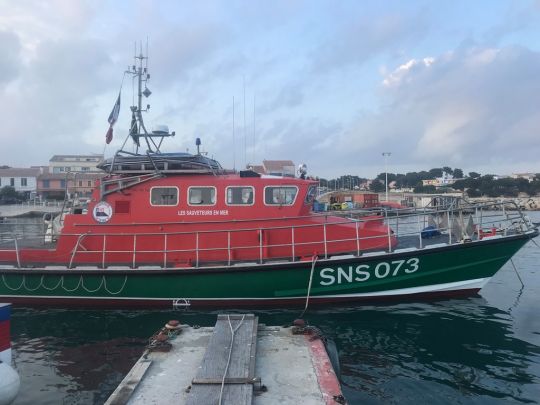
A helicopter from the French Navy will come and train in hoisting maneuvers with the volunteer crew of the CTT (All Weather Boat) SNS 73. This type of exercise is regularly organized so that the various participants can keep a good level of training.
Rendezvous is set a few miles off Carro
We take place on board of the all-weather boat Patrons Antonin & Raoul Domenge. The generator, which supplies the boat with electricity, is started, then the two 360 hp IVECOs are put in motion. After a check of the deck and the engine, the mooring lines are cast off.
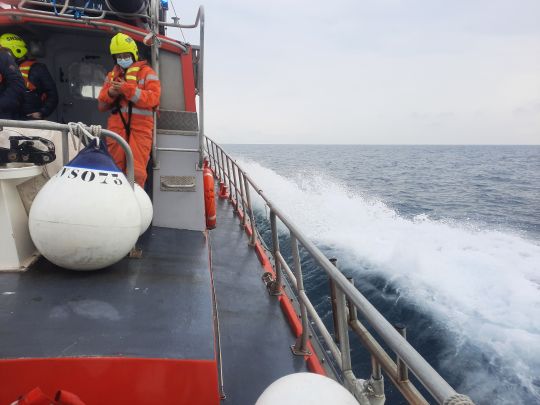
A few minutes after we left the harbor, the helicopter is approaching. It is a Dauphin, a light aircraft, which is specialized in search and rescue at sea. Its crew of four soldiers is composed of a pilot, a co-pilot, a winch operator and a diver, nicknamed the "plouf".
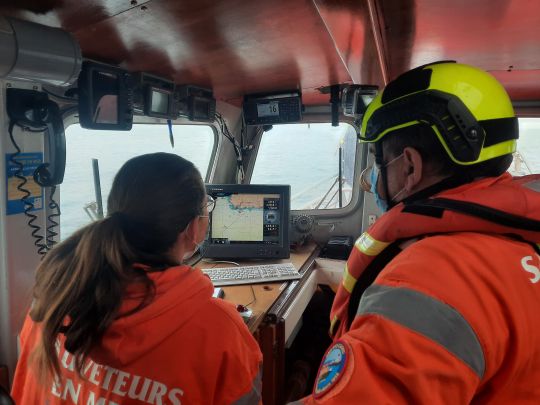
Émilie, posted on the radio, coordinates the actions between the helicopter and the CTT helmsman.
A wet and noisy exercise
Heading is given to 270, facing the wind, for a stabilized speed of 10 knots. The arrival of the helicopter is fast and straightforward, then the pilot stabilizes at 5 m from the wheelhouse.
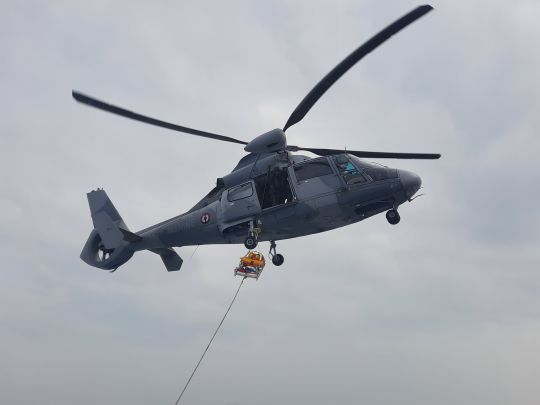
The noise of the turbines is deafening. Communication on deck is done by gestures. The rotor, whose blades raise winds of 80 knots, raises the spray, which limits the visibility on the bridge. The helicopter is kept perpendicular to the axis of the CTT so that the pilot (seated on the right) has a better view of the operation in progress, and can stall forward in case of a problem. With a perfect interaction between the CTT and the helicopter, the "splash" is winched on the rear deck of the CTT.
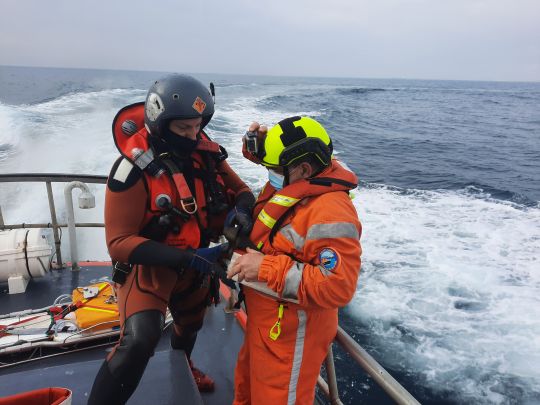
A messenger then passed between the aircraft and the boat to guide the passage of the stretcher. The stretcher joined the diver on the back deck, and then it was the turn of the two SNSM divers to board the helicopter, each in turn.
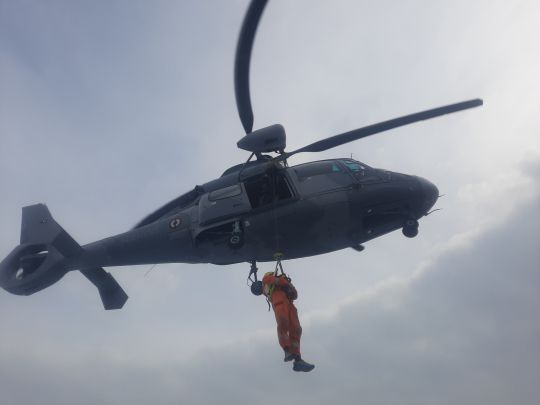
We moved a little further offshore to avoid crossing the channel reserved for merchant ships, in which exercises are forbidden.
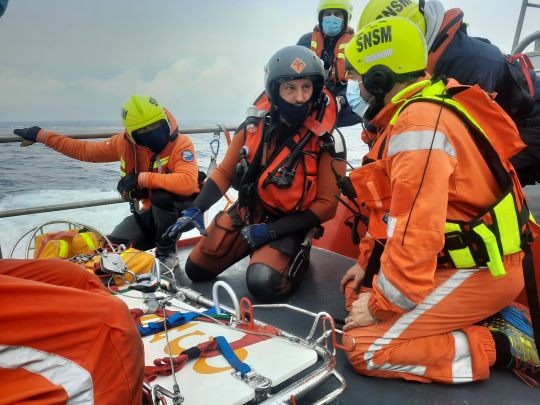
During this time, the "splash" takes the time to discuss with the volunteer crew the procedures to follow in this type of situation, as well as the rules to follow for the use of the stretcher. The exercise resumes, but on the front deck, which is much smaller. The splash pad is placed just in front of the wheelhouse, next to the windlass.
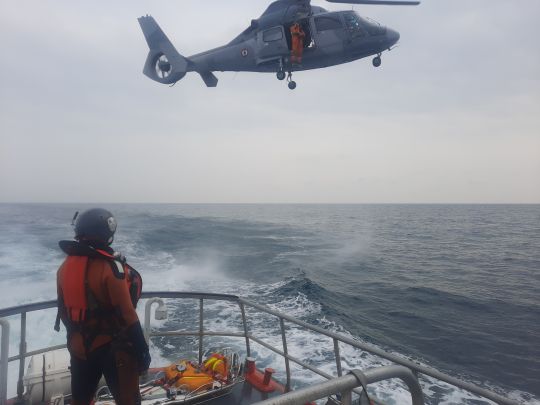
Return to port and debriefing
The exercise ended. Freedom of maneuver is given to the CTT, which sets course for the port of Carro. The helicopter made a low pass to greet the crew and returned to its base in Hyères. The crew is now debriefed and the sea report is written, which is centralized on the SNSM's computer system.
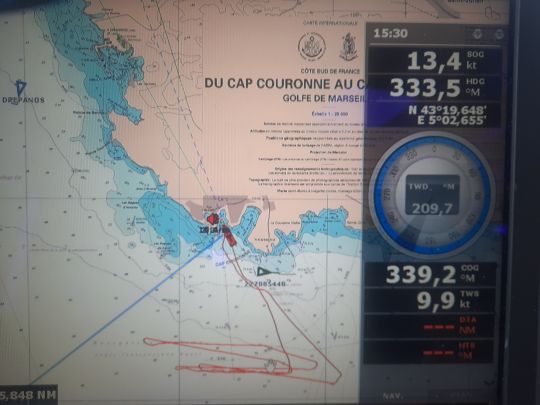
Each outing is rich in lessons for the entire crew, veterans and young recruits alike. The conditions were mild, but the same exercise at night with 4 m of waves is much more physical for the volunteer rescuers of the SNSM, who devote part of their lives to trying to save those of others.

 /
/ 




